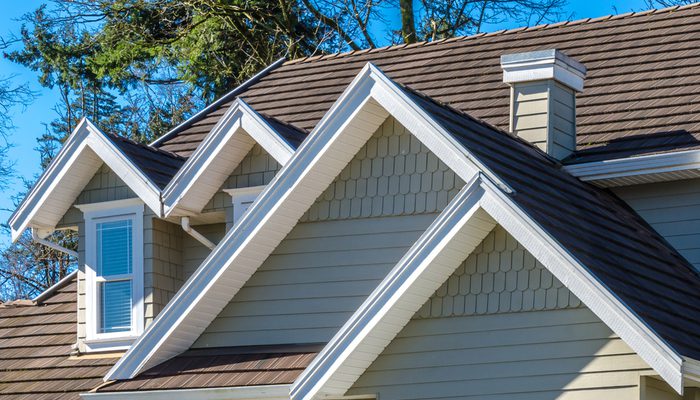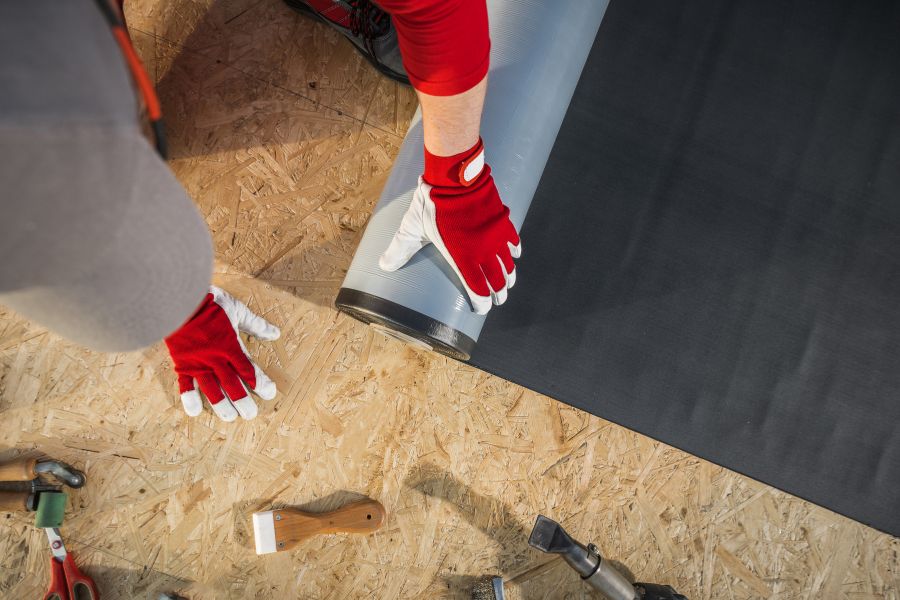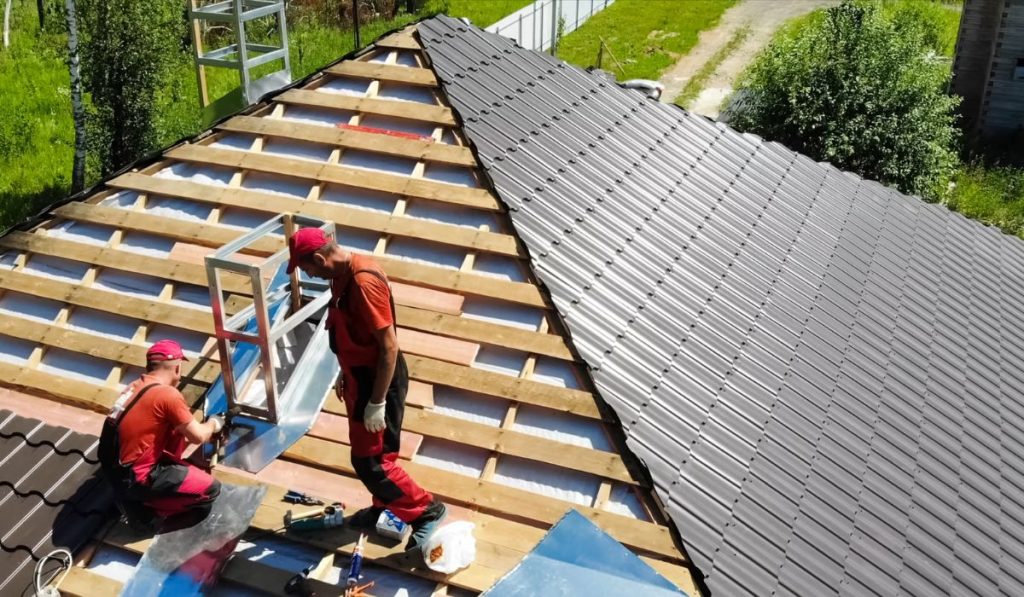Your roof is one of the most crucial elements in protecting your home. Residential roofing provides safety, comfort, and protection from the elements.
In this article, we’ll cover the basics of residential roofing projects, explore different roofing systems and materials, and discuss essential maintenance and repairs to keep your roof in great shape.
What is residential roofing?
Residential roofing refers to the process of installing, repairing, or replacing roofs on homes. It focuses on providing durable protection from the elements while adding curb appeal.
Key Takeaways
- Residential roofing refers to the materials and systems used to cover and protect a home from the elements.
- There are several types of residential roofing materials, including asphalt shingles, metal roofing, and tile roofing, each with its own advantages and drawbacks.
- Proper maintenance, inspections, and repairs are essential for the longevity of a residential roof.
What is Residential Roofing? A Detailed Overview
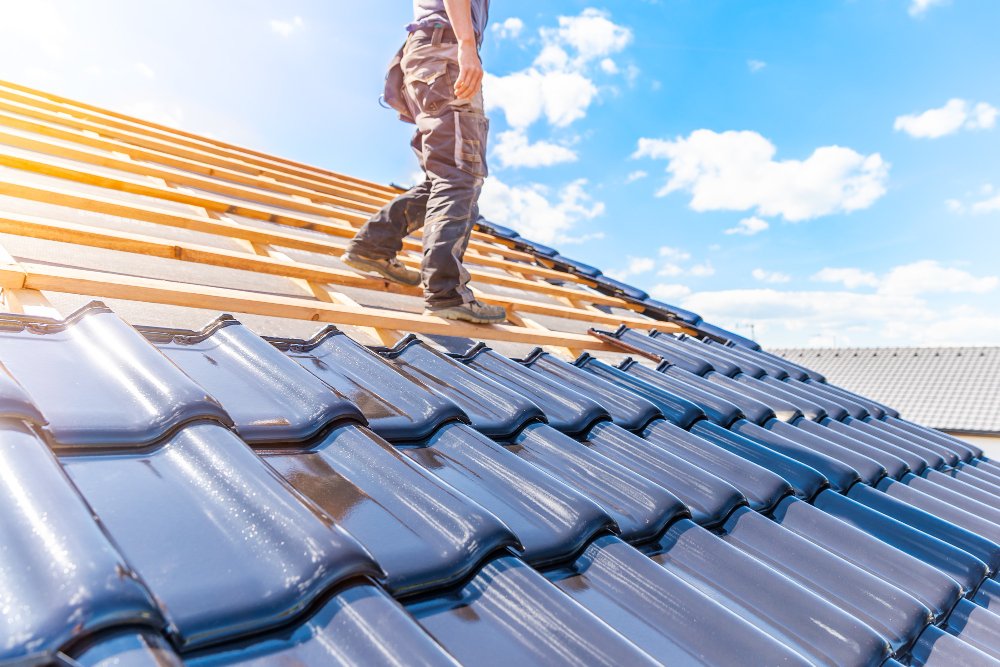
Residential roofing is the process of constructing or installing the roof system on a home.
It is one of the most vital components of a home’s structure, offering protection from weather elements such as rain, wind, and snow.
Besides providing shelter, the roof supports insulation, helping to maintain a comfortable indoor temperature and improve energy efficiency.
A residential roofing system typically consists of multiple layers that work together to ensure durability and protection.
The main layer includes roofing materials like shingles, tiles, or metal panels, which act as the first line of defense against the elements.
Beneath this is the underlayment, which acts as a moisture barrier, protecting the roof deck.
Insulation is often added between the roof deck and underlayment to improve energy efficiency and keep the home warmer in winter and cooler in summer.
The roof deck, which is typically made of plywood or oriented strand board (OSB), provides the structural foundation for the entire system. Many homeowners often wonder, is OSB good for roofing? In most cases, OSB is a durable and cost-effective choice, making it a popular option for roof decking.
It is essential that each of these components is installed correctly to prevent damage and ensure the longevity of the roof.
Residential roofing is designed to withstand various weather conditions depending on the climate in which the home is located.
For instance, in areas prone to heavy rainfall, materials that resist water penetration are used, while in regions with strong winds, more durable shingles or tiles may be chosen to prevent damage.
Snow and ice protection may also be essential in colder climates to prevent water damage and ice dams.
Regular upkeep is essential for extending the life of your roof, especially when it comes to residential roofing in Norman, OK.
A well-maintained roof can last for several decades, while neglecting regular inspections and repairs can lead to costly issues, including leaks, structural damage, or even premature roof failure.
Regular roof inspections are recommended to ensure your home remains protected and to prevent expensive repairs down the line.
Types of Residential Roofing
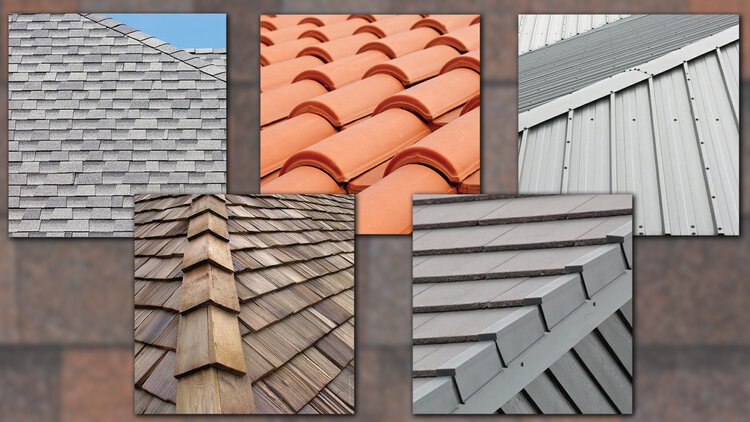

Several types of roofing materials and systems are used in residential construction, each offering different benefits in terms of durability, appearance, and cost.
Here are some of the most common roofing materials used in residential roofing:
1. Asphalt Shingles
Asphalt shingles are the most common roofing material used in the United States due to their affordability, ease of installation, and availability.
These shingles come in a variety of colours and styles and are suitable for many different types of homes.
Pros: Affordable, easy to install, wide range of colours and styles, relatively long lifespan (15 to 30 years).
Cons: Susceptible to damage from extreme weather conditions like high winds and hail.
2. Metal Roofing
Metal roofing has become increasingly popular in recent years due to its durability, energy efficiency, and long lifespan.
This type of roofing is available in a range of materials, including steel, aluminium, and copper.
Pros: Long-lasting (50+ years), energy-efficient, resistant to extreme weather conditions, low maintenance.
Cons: Higher initial cost compared to asphalt shingles, can be noisy during rainstorms or hail.
3. Tile Roofing
Tile roofing is commonly used in regions with hot climates, such as parts of the Southwest. Tile roofs are often made from clay or concrete and provide a distinctive, traditional look.
Pros: Long lifespan (50+ years), fire-resistant, energy-efficient.
Cons: Heavy (may require additional structural support), expensive, can be brittle and break under heavy impact.
4. Wood Shake or Shingle Roofing
Wood shake or shingle roofing is a natural material option that adds a rustic, charming look to a home.
It is often used in regions where the aesthetic appeal of natural materials is important.
Pros: Attractive, energy-efficient, good insulation properties.
Cons: High maintenance requirements, susceptible to rot, expensive, and prone to fire hazards if not properly treated.
5. Slate Roofing
Slate is a natural stone material that is known for its durability and sophisticated appearance. It’s often used on historic or luxury homes.
Pros: Extremely durable (up to 100 years or more), fire-resistant, environmentally friendly.
Cons: Very expensive, heavy, difficult to install, may require additional support for the roof structure.
Residential Roof Installation and Repair
Roof installation or replacement is a major project that involves careful planning, precise execution, and the right materials for the job.
Whether you’re building a new home or replacing an old roof, it’s important to work with a reputable roofing contractor who can help you choose the right materials and ensure the proper installation.
In addition to installation, roof repair is another essential aspect of residential roofing.
Over time, roofs can suffer wear and tear due to exposure to the elements, causing leaks, sagging, or damaged shingles.
It’s crucial to schedule regular roof inspections to catch minor issues before they turn into expensive repairs.
How to Maintain Your Residential Roof
Proper roof maintenance is essential to extend the life of your roof and prevent costly repairs. Here are some basic maintenance tips:
1. Regular Inspections
Conducting annual roof inspections is key to identifying issues early. Look for cracked or missing shingles, signs of water damage, or visible wear.
If you’re unsure about the condition of your roof, it’s always best to hire a professional to inspect it.
2. Keep Gutters Clean
Clogged gutters can prevent water from draining properly, which can lead to water damage and roof leaks.
Make sure to clean your gutters regularly, especially during the fall when leaves and debris accumulate.
3. Trim Overhanging Branches
Overhanging branches can damage your roof by scraping against the surface or breaking during storms. Regularly trim any trees or branches that are too close to the roof.
4. Replace Damaged Shingles
If you notice any damaged shingles, it’s important to replace them promptly to avoid water infiltration. Missing shingles leave your roof vulnerable to leaks and other damage.
5. Check Flashing and Sealant
Flashing around chimneys, vents, and skylights can wear out over time, causing leaks. Make sure the flashing is in good condition and that the sealant around these areas is intact.
When to Replace Your Residential Roof
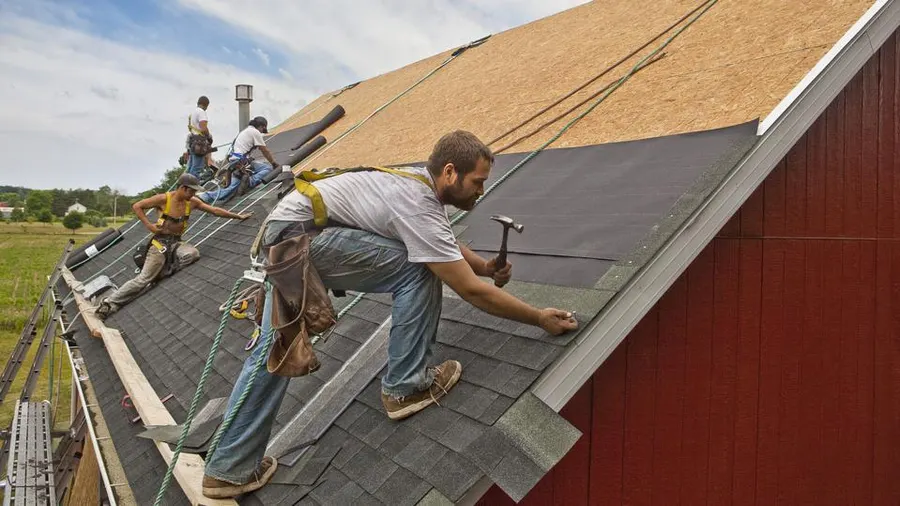

Knowing when to replace your roof can be difficult, but several signs can help indicate that it’s time to invest in a new one. Common signs that your roof may need replacing include:
Visible sagging: If your roof appears to be sagging or drooping, this is a sign of structural damage and may require immediate attention.
Frequent leaks: Multiple leaks or leaks that are not easily repaired may indicate that the entire roof needs to be replaced.
Old age: The age of your roof plays a significant role in determining whether it needs replacement.
For example, asphalt shingle roofs typically last 15 to 30 years, while metal or slate roofs can last 50 years or more.
Frequently Asked Questions
1. What’s the best roofing material for a home in a snowy area?
Metal roofing or slate roofing is often best for homes in snowy areas, as they are durable and can shed snow efficiently.
2. How often should I have my roof inspected?
It’s recommended to inspect your roof once a year, especially after severe weather or a major storm, to ensure there are no hidden issues.
3. How long does a residential roof last?
The lifespan of a roof depends on the material. Asphalt shingles last 15 to 30 years, while metal roofs can last 40 to 70 years with proper maintenance.
Conclusion
Residential roofing is an essential part of maintaining the integrity of your home.
Whether you’re looking to install a new roof or simply maintain and repair your existing one, it’s important to choose the right materials, schedule regular maintenance, and stay on top of potential issues.
By understanding the types of roofing systems, the importance of maintenance, and when to replace your roof, you can ensure that your home remains protected for years to come.
If you’re considering a new roof or need roof repairs, it’s important to consult with a professional to get expert advice and a solution tailored to your home’s needs.
Regular inspections, proper maintenance, and timely repairs will help extend the life of your roof and protect your home from the elements.
Keep an eye on any signs of damage, and don’t hesitate to address any issues as soon as they arise.

